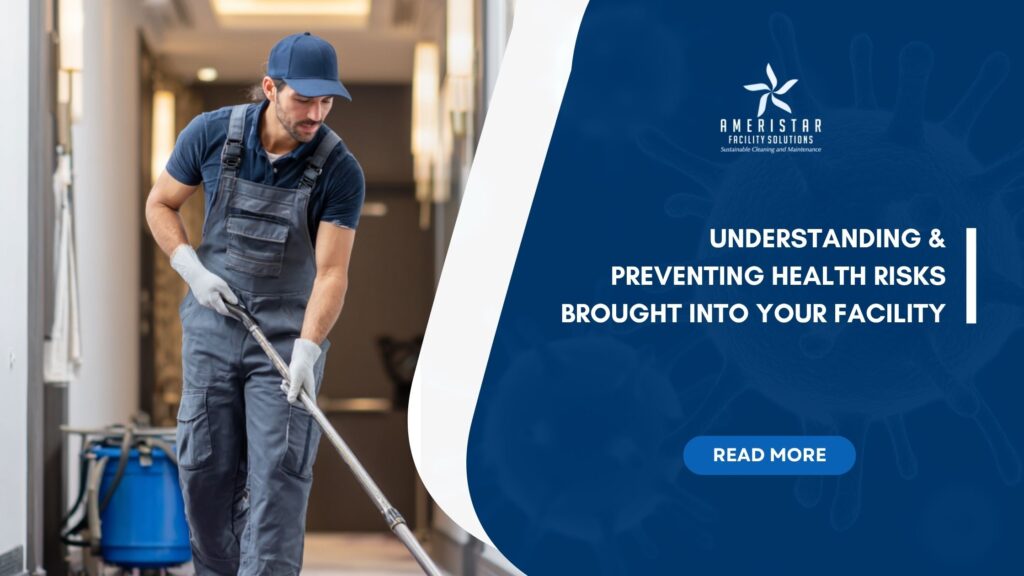Maintaining a clean and safe commercial facility is about more than appearances. It’s a critical component of protecting the health of employees, customers, and visitors. Every person who enters your building brings with them potential contaminants from the outside world. Without proper precautions and cleaning protocols, these health risks can spread quickly, affecting productivity and increasing absenteeism.
Below are essential strategies to help you understand the sources of health risks in your facility and how to prevent them through proactive cleaning and maintenance.
Identify Common Health Risks in Commercial Spaces
Commercial properties, whether offices, warehouses, schools, or healthcare facilities, face numerous health threats from everyday activity:
– Bacteria and viruses from high-touch surfaces
– Mold and mildew from poor ventilation or moisture buildup
– Allergens such as dust, pollen, and pet dander
– Pest infestations due to food waste or unsealed entry points
Recognizing these threats is the first step in implementing an effective prevention strategy.
Prioritize High-Touch Surface Cleaning
Germs thrive on high-touch areas like door handles, elevator buttons, keyboards, and light switches. These surfaces can transmit bacteria and viruses if not cleaned regularly.
– Disinfect high-contact surfaces multiple times per day.
– Use EPA-approved disinfectants effective against common viruses.
– Pay special attention to shared equipment in break rooms, conference rooms, and restrooms.
Regular disinfection routines are key to breaking the chain of transmission for illnesses like the flu, common cold, or stomach viruses.
Improve Indoor Air Quality
Poor air quality can lead to respiratory issues, fatigue, and worsened allergy symptoms. Many facilities overlook the importance of clean air in their health and safety planning.
– Replace HVAC filters on a regular schedule.
– Use HEPA filters in high-sensitivity areas.
– Schedule periodic duct cleaning to reduce dust and mold buildup.
Investing in proper ventilation and filtration is especially important in the colder months when windows remain closed and indoor air is recirculated.
Prevent Moisture-Related Issues Like Mold
Mold poses a serious health risk, especially for individuals with asthma or allergies. It often thrives in hidden areas where moisture accumulates, beneath sinks, around HVAC units, or in basements.
– Fix plumbing leaks promptly.
– Monitor humidity levels and use dehumidifiers if necessary.
– Inspect ceilings, walls, and vents for water stains or musty smells.
Addressing mold at the source ensures a safer indoor environment and protects your facility from structural damage.
Promote Hand Hygiene Among Staff and Visitors
Encouraging good hand hygiene habits can dramatically reduce the spread of germs throughout your facility.
– Install hand sanitizer dispensers at all entrances and high-traffic areas.
– Keep restrooms fully stocked with soap, paper towels, and signage promoting proper handwashing.
– Include hygiene reminders in employee communications and training.
A culture of cleanliness starts with daily habits. Make it easy for people to do their part.
Keep Floors and Entryways Clean and Dry
Floors carry a surprising amount of contaminants, especially during wet or snowy seasons. Dirt, bacteria, and pollutants can be tracked in from the outside, posing both health and safety risks.
– Use commercial-grade entry mats to trap dirt and moisture.
– Clean mats daily and rotate or replace them regularly.
– Mop and disinfect floors in high-traffic areas frequently.
Maintaining clean floors also helps prevent slip-and-fall accidents, which are among the most common workplace injuries.
Establish a Routine Deep Cleaning Schedule
Even with daily cleaning, some areas require deeper attention to remove buildup and hidden contaminants.
– Schedule monthly or quarterly deep cleans for carpets, upholstery, and hard-to-reach spaces.
– Use steam cleaning or electrostatic disinfection technologies for thorough sanitization.
– Partner with a professional cleaning service for comprehensive results.
Routine deep cleaning not only safeguards health but also extends the lifespan of furnishings and equipment.
Train Your Staff on Cleaning and Safety Protocols
The success of any health prevention strategy relies on consistent execution by your team.
– Provide clear cleaning protocols and assign responsibilities.
– Offer training on proper disinfecting techniques and product usage.
– Encourage staff to report health concerns or maintenance issues promptly.
Knowledgeable and empowered employees are your first line of defense against preventable health hazards.
Protect Your Facility by Prioritizing Health Prevention
Understanding how health risks enter your facility is crucial for stopping them at the source. From enhanced cleaning routines to air quality management and staff hygiene, every measure you take contributes to a safer, healthier workplace.
Stay proactive and build a facility environment that supports wellness year-round.
Need Professional Janitorial Help?
AmeriStar Facility Solutions offers custom commercial cleaning plans designed to prevent health risks and maintain industry-compliant standards.
Contact us at (570) 310-1057 or visit www.ameristarfacilitysolutions.com to learn how we can help protect your facility and your people.

